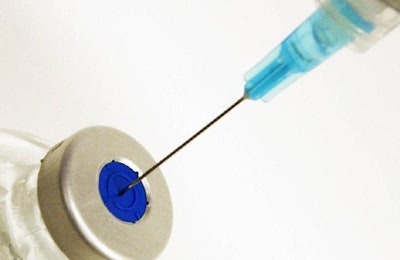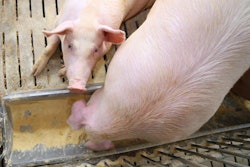
Live virus of foot-and-mouth disease not allowed outside Plum Island, but company said its product is not able to produce infection
The U.S. Department of Agriculture’s (USDA) Animal and Plant Health Inspection Service (APHIS) is seeking public comment on a petition from Zoetis Inc. seeking approval to manufacture a vaccine for foot-and-mouth disease (FMD) on the U.S. mainland.
The live virus of FMD is not allowed anywhere in the country, except for the Plum Island Animal Disease Center where it is held and worked with under very strict biocontainment procedures. Zoetis’ vaccine, which was developed jointly with USDA’s Agricultural Research Service, is non-infectious, non-transmissible, and incapable of causing the disease because it has been modified in such a way that it is no longer able to produce infection. The manufacturer asserts that because the FMD virus is no longer able to produce infection, it should not be considered live virus of FMD and should be able to be produced on the U.S. mainland.
“The FMD virus strain brought into the United States under permit was genetically modified by removing the leader protease gene, rendering the strain incapable of becoming infectious, pathogenic, contagious, or of producing clinical or subclinical signs of FMD,” USDA said. “This modification makes the virus unable to reacquire its infectious abilities through mutation. The petitioner also introduced unique restriction enzyme sites into the genome for emerging vaccine strain development, as well as markers that allow for differentiation of infected from vaccinated animals.”
As part of the petition review process, APHIS is seeking comments from the public on the following questions:
- Are there possible risks to livestock associated with the commercial manufacture of FMD vaccine in the United States? If so, are these offset by possible benefits associated with such development, assuming appropriate safeguarding?
- If there are possible risks, do these risks differ depending on the location and method of development? If so, how?
- What safeguards should surround the commercial manufacture of FMD vaccine, if authorized?
- How should the overall language of 21 U.S.C. 113a be interpreted in light of significant technical developments in the field of virology since its enactment?
- APHIS notes that “introduced” is not defined within 21 U.S.C. 113a. How should “introduced . . . into the mainland United States” be interpreted?
- Based on the information supplied, should the modified virus (master seed) be considered a “live virus of foot-and-mouth disease”? Specifically, should its inability to express as FMD be considered to place it outside the scope of 21 U.S.C. 113a?
Public comments will be accepted through September 14 online at https://www.federalregister.gov/d/2020-15031 or via mail to Docket No. APHIS-2020-0054, Regulatory Analysis and Development, PPD, APHIS, Station 3A-03.8, 4700 River Road, Unit 118, Riverdale, MD 20737-1238. APHIS will thoroughly review all comments before making its determination.
FMD is a severe and highly contagious viral disease affecting cows, pigs, sheep, goats, deer, and other animals with divided hooves. The virus weakens affected animals and permanently reduces their ability to produce meat and milk. It was eradicated from the United States in 1929, but is still found in parts of Africa, Asia, Europe and South America. If the disease were to infect the U.S. livestock industry, it would cause devastating economic effects, USDA said.










